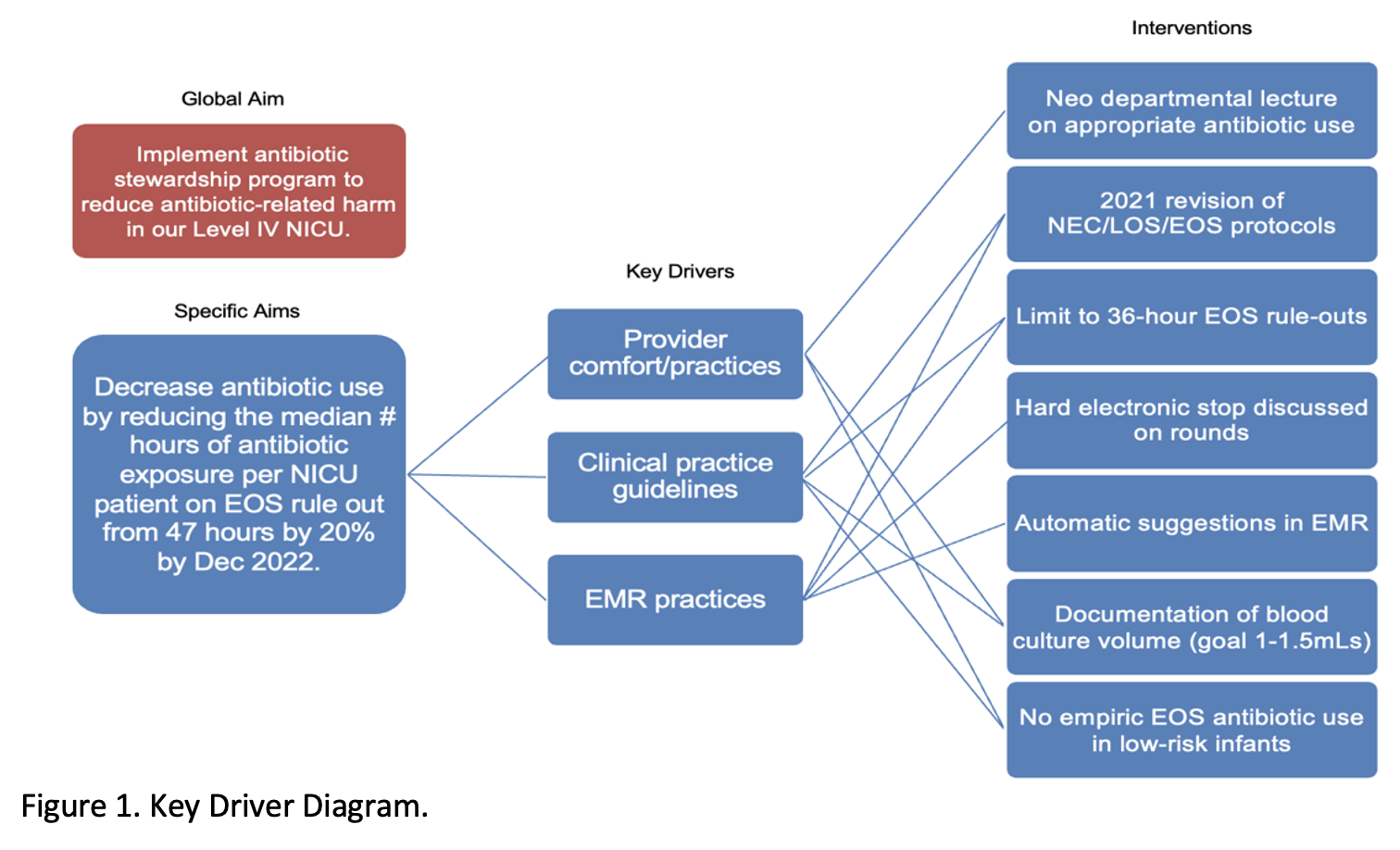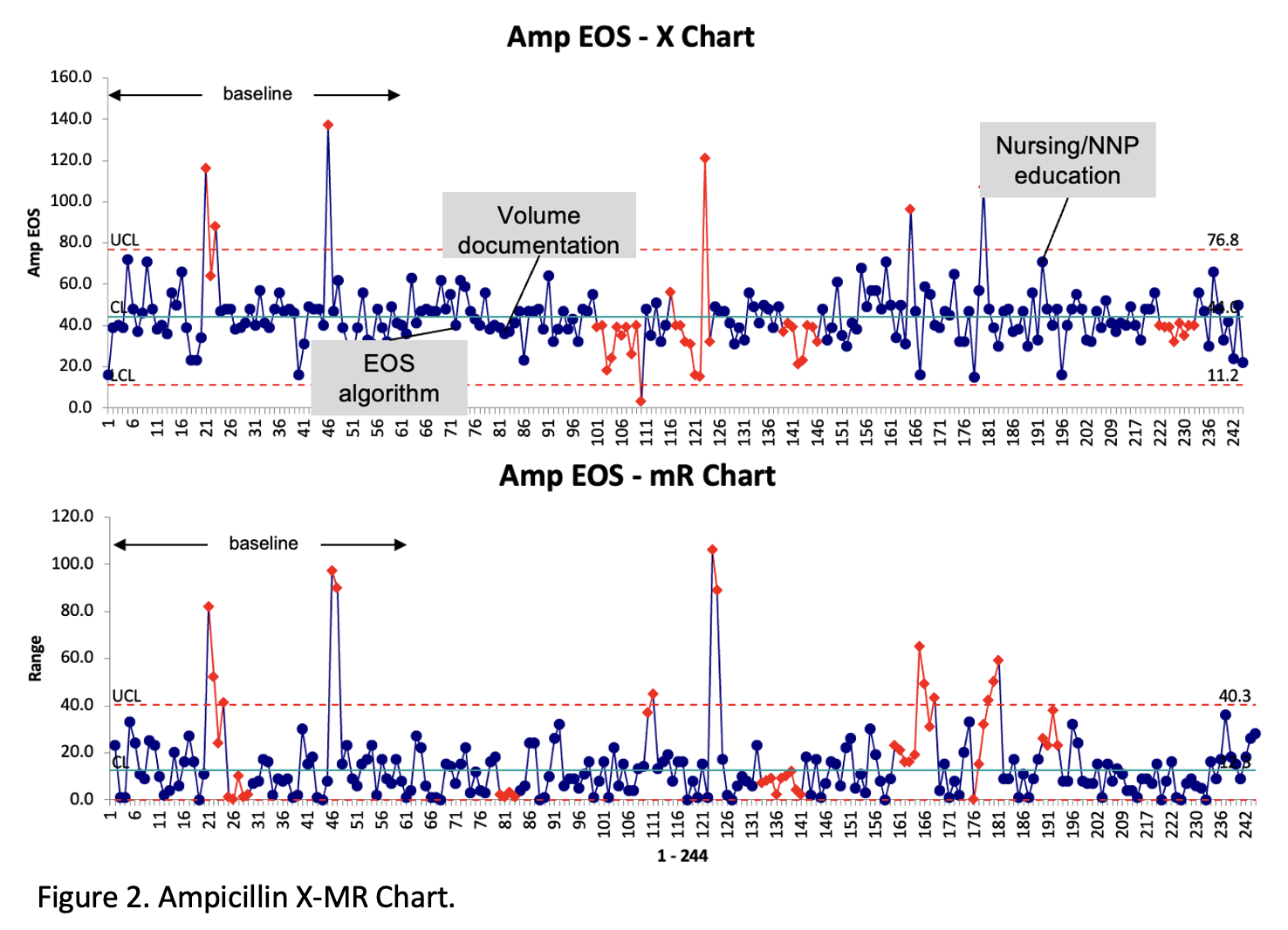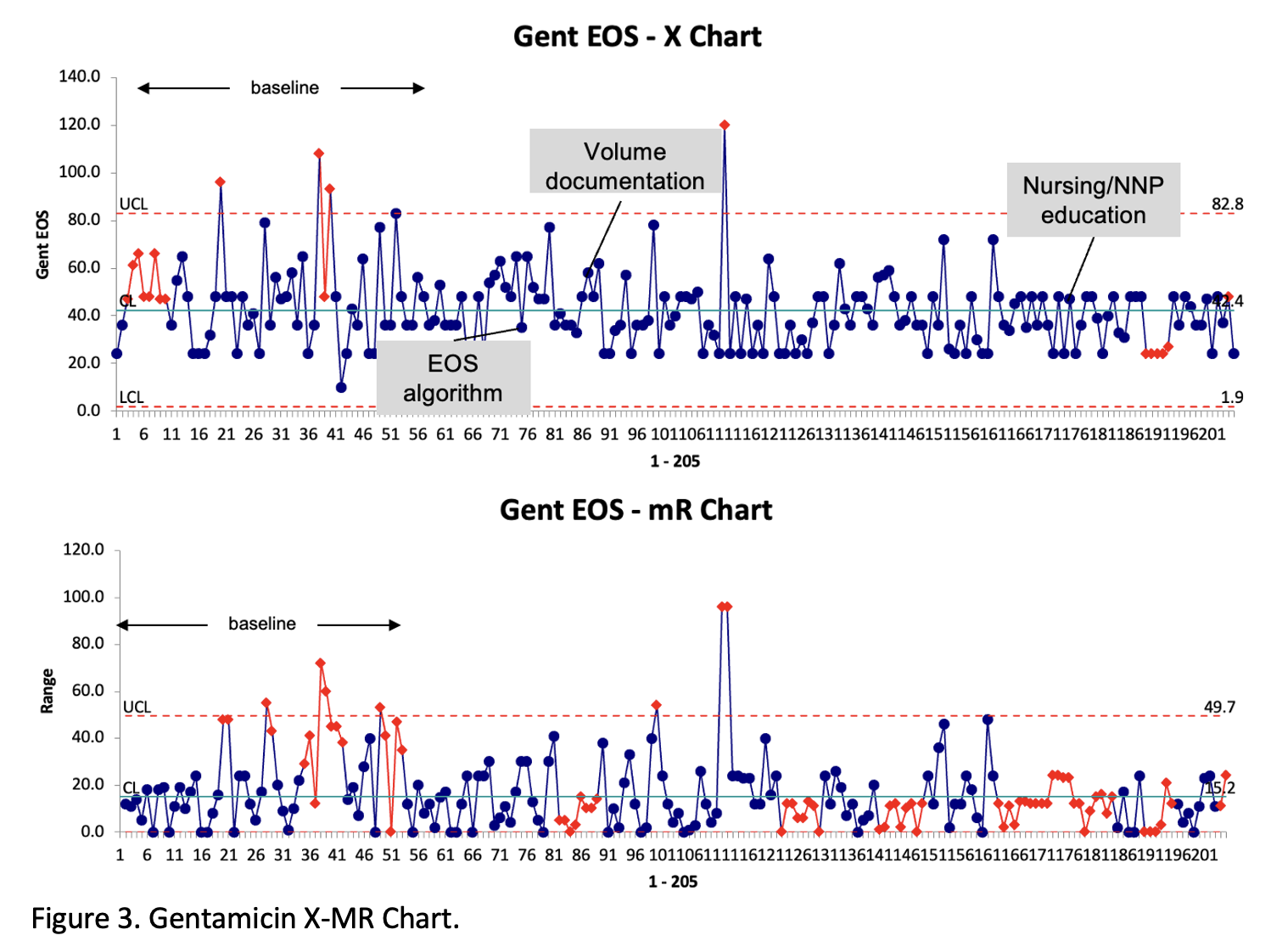Quality Improvement/Patient Safety: Improvement Science Research Methods
QI 1: Improvement Science Research Methods & Evaluation of QI Educational Interventions
676 - Reducing Unnecessary Antibiotic Use in a Level IV NICU: A Quality Improvement Project
Publication Number: 676.151

Richelle M. Reinhart, MD (she/her/hers)
Fellow
Children's National Health System
washington, District of Columbia, United States
Presenting Author(s)
Background: Antibiotics are one of the most common medications used in the Neonatal Intensive Care Unit (NICU), as neonatal sepsis is a leading cause of infant morbidity and mortality. However, these medications are not without their side effects and their inappropriate use can lead to bacterial resistance and adverse outcomes.
Objective:
Global aim: To implement an antibiotic stewardship program to reduce antibiotic-related harm in our Level IV NICU.
Specific aim: To decrease antibiotic use by reducing the median number of hours of antibiotic exposure per patient undergoing early onset sepsis (EOS) rule out from 47 to 38 hours (decrease by 20%) by December 2022.
Design/Methods: Our key drivers include provider comfort & practices, clinical practice guidelines, and electronic health record practices. Interventions include: creation of a multidisciplinary team (pharmacists, neonatology and infectious diseases physicians, neonatology nurses, neonatology unit director); education of faculty, nurse practitioners, trainees; departmental lecture on high-impact research in appropriate antibiotic use; updated unit protocols; documentation of blood culture volumes (goal >1mL), and an algorithm limiting EOS rule outs to 36 hours. The primary outcome is the median number of hours exposed to antibiotics for those undergoing EOS rule out, with process outcomes of rule outs greater than 36 hours and 48 hours. Balancing measures include mortality from sepsis (primary), the number of positive cultures greater than 36 hours (secondary), and length of stay (secondary).
Results: The median number of hours exposed to antibiotics for NICU patients treated for EOS rule outs decreased from 47 hours to 40 hours. Rule outs greater than 48 hours decreased from 27% to 18%, those greater than 36 hours decreased from 71% to 62%, and there was no change in length of stay (7 days) before or after interventions. There were no positive EOS cultures that grew after 36 hours.
Conclusion(s): We have shown a successful decrease of unnecessary antibiotic use in our Level IV NICU with solely outborn infants using the interventions described above. To accomplish judicious antibiotic use, buy-in and involvement of front-line providers are crucial. To create sustainable change for a prevalent condition such as EOS rule outs, a culture shift is necessary and requires a multidisciplinary approach. In a unit where EOS management starts prior to transfer, collaboration with origin hospital systems is essential.


